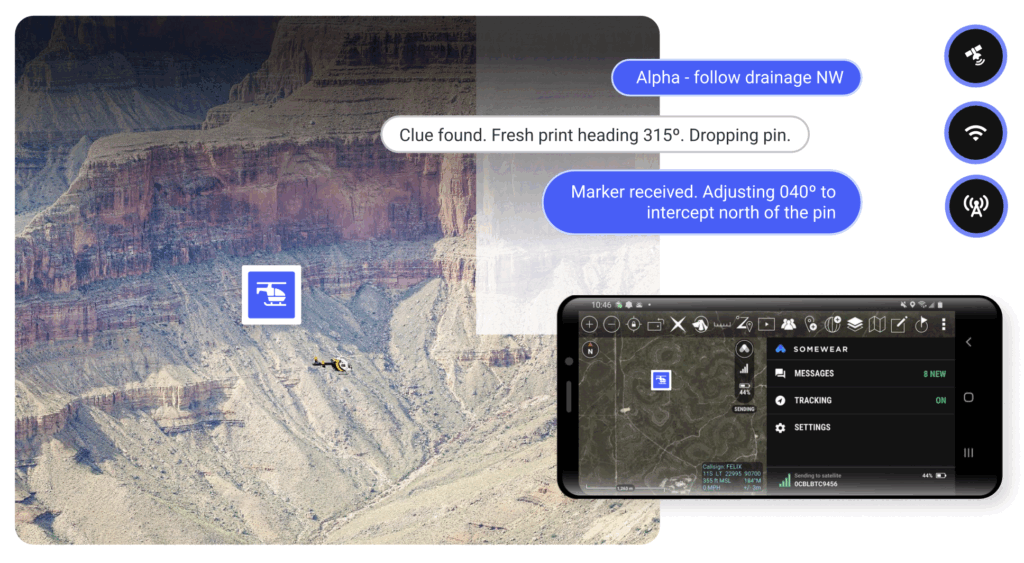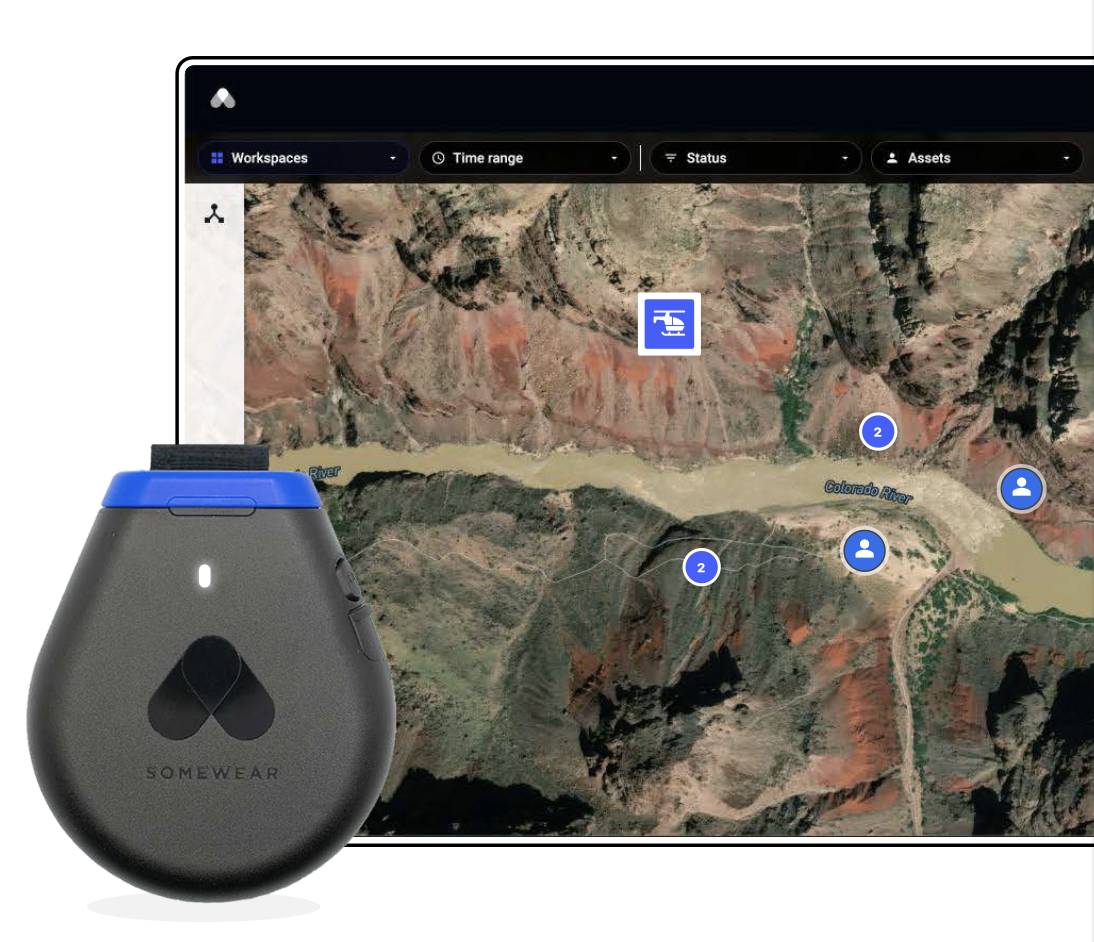SNAPSHOT
Missions
120-180 specialized SAR missions per year
Deployment
15 Somewear Hotspots
Comms Stack
LMR (analog), Somewear Hotspots, TAK/ATAK, CAD/dispatch visibility via Somewear Grid

“Somewear has reshaped how we think about personnel accountability; maximizing operator safety. Its near real-time satellite messaging and tracking, paired with shared awareness in the field, has driven operational efficiencies and shaved off hours from operations”
Deputy Paul Clifton
Assistant Search & Rescue Coordinator, Coconino County Sheriff’s Office
CHALLENGE
CCSO operates across some of the most communications-challenged environments in Arizona: deep canyons, vast wilderness areas, and long distances between incidents and infrastructure. Radio coverage is uneven, cell coverage is often nonexistent, and interagency incidents (wildfires, evacuations, technical rescues) demand a common operating picture that field teams and dispatch can actually share.
Before adopting Somewear, CCSO’s communications stack consisted of LMR, inReach messengers, and occasional mobile repeaters. They leveraged these tools in their PACE plan to develop communications resilience, but still regularly experienced:
Delayed information flow
from remote teams, often 45-90 minutes or more as deputies drove back to a coverage area to report, leading to outdated reports and inefficiencies.
Heavy radio traffic
with “what’s your location?” checks consuming airtime that should be reserved for problem-solving and air/ground coordination.
Gaps in accountability
and visibility for both field leads and dispatch; the team relied on unreliable tracking data.
lnteragency friction
in creating a shared COP, especially when onboarding partners on the fly or when infrastructure failed.
SOLUTION
CCSO formalized Somewear inside its PACE plan: originally fielded as the Emergency leg, it is now the Alternate/Contingency for most SAR operations and the designated Primary data link in areas historically known for radio/cellular dead zones or during infrastructure outages.
CCSO’s deployment of Somewear Hotspots is distributed across SAR coordinators, team leads, and the rest are based at rural substations so first-on-scene patrol can originate traffic from remote areas.
In the field, teams use messaging and continuous tracking to maintain complete situational awareness, significantly reducing voice communication requirements. Somewear’s SmartRouting™ logic automatically selects the best available network-cell/WiFi/satellite-providing network assurance and conserving satellite airtime when broadband exists.

The Grid web app provides browser-based oversight at command without additional client software. Coordinators send or receive updates, tune tracking intervals over-the-air, and manage deployed devices. To keep mission threads clean when parallel operations spin up, CCSO configures and runs distinct Somewear Workspaces.
Using Somewear’s ATAK plugin and TAK server integration, field data is pushed into CCSO’s TAK environment so field, command, and dispatch establish a common operating picture. QR-based enrollment lets CCSO rapidly add partner agencies and volunteers to the shared network while keeping provisioning and workspace control in CCSO’s hands.

Results
CCSO formalized Somewear inside its PACE plan: originally fielded as the Emergency leg, it is now the Alternate/Contingency for most SAR operations and the designated Primary data link in areas historically known for radio/cellular dead zones or during infrastructure outages.
In canyon environments where other agencies’ voice traffic was unreadable, CCSO continued operating over Somewear-arriving at the facts much quicker than what eventually filtered through radio relays.
Faster operations, earlier decisions
Send last-known-location and situational updates immediately instead of driving 45-90 minutes for coverage. Tasking and resourcing move sooner.
Shared COP-beyond the command post
Field teams see each other on the map (not just command), and dispatch participates in the same picture-enabling proactive status checks and accountability without constant radio polling.
Better radio discipline and clarity
A significant drop in “what’s your location?” radio traffic; voice comms are reserved for problem solving and air/ground deconfliction.
Better documentation and after-action
With mission breadcrumbs and message logs flowing into TAK, CCSO closes knowledge gaps that previously existed when comms dropped out-supporting faster debriefs and future planning.
